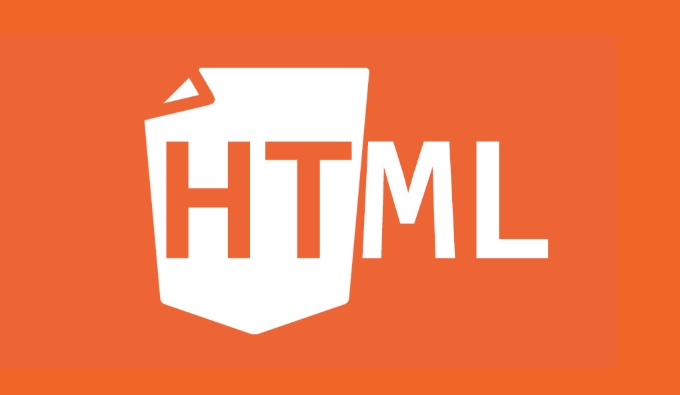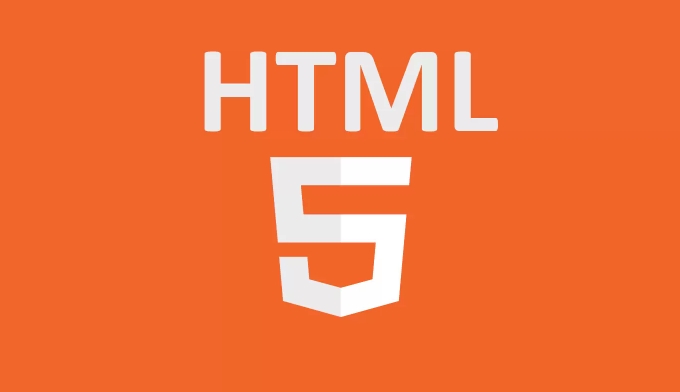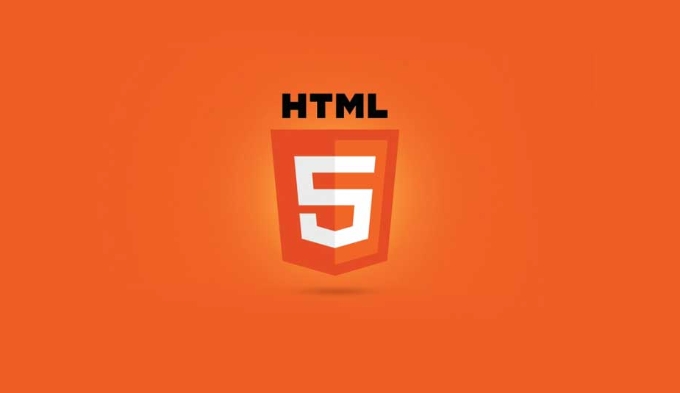H5 Web Components is a set of APIs based on native Web standards for building reusable, independently encapsulated UI components that support cross-frame use. 1. It mainly includes three parts: Custom Elements is used to define custom HTML tags; Shadow DOM provides encapsulation capabilities for styles and structures; HTML Templates (template and slot) are used to define reusable HTML fragments. 2. The advantages lie in cross-frame compatibility and good encapsulation to avoid style conflicts. 3. The creation steps include: defining a class that inherits HTMLElement, registering components using customElements.define(), encapsulating content with Shadow DOM, and combining template and slot to achieve flexible content insertion. 4. Pay attention to compatibility, event communication, style control and performance issues when using it. It is recommended to use construction tools or frameworks to improve development efficiency. Mastering Web Components can improve development efficiency and keep code tidy, but you need to understand the details of packaging, communication and style management.

H5 Web Components is a modern front-end technology for building reusable UIs that allow you to create custom HTML elements and use them in any web project that supports standards without relying on specific frameworks. This is a very practical choice for developers who want to improve development efficiency and keep the code clean.

What are H5 Web Components?
H5 Web Components is not a unique technology for a framework, but a set of APIs based on native Web standards, mainly including three parts:
- Custom Elements : Allows you to define your own HTML tags.
- Shadow DOM : Provides the ability to encapsulate styles and structures to avoid style conflicts.
- HTML Templates (
<template></template>and<slot></slot>) : Used to define reusable HTML fragments.
These technologies combine to enable you to create highly encapsulated, independent, reusable UI components.

Why choose Web Components?
The biggest advantage of using Web Components is cross-frame compatibility . You can use it to write a button component and then use it directly in React, Vue, Angular, or native JS projects without additional adaptation.
Another benefit is good packaging . Through Shadow DOM, the style and structure of components can be isolated from other parts of the page to avoid global pollution.

For example: If you write a <my-button></my-button> component, even if Bootstrap or Tailwind is used on the page, it will not be disturbed by global styles unless you actively let it "expose" certain styles.
How to create a simple Web Component?
The basic steps for creating a Web Component are as follows:
- Define a class, inherit
HTMLElement - Register components using
customElements.define() - Encapsulate content with Shadow DOM
- Optionally use
<template></template>and<slot></slot>to achieve more flexible content insertion
class MyButton extends HTMLElement {
constructor() {
super();
this.attachShadow({ mode: 'open' });
this.shadowRoot.innerHTML = `
<style>
button {
background: #007bff;
color: white;
border: none;
padding: 10px 20px;
border-radius: 4px;
cursor: pointer;
}
</style>
<button><slot></slot></button>
`;
}
}
customElements.define('my-button', MyButton);It is very simple to use:
<my-button>Click me</my-button>
This completes a basic button component, with completely isolated styles and the content can be customized through <slot></slot> .
Some precautions when using it
Although Web Components are powerful, there are some things to note:
- Compatibility : Modern browsers basically support it, but if you need to support IE11, you may need to introduce polyfill.
- Event communication : Events triggered inside the component need to be manually bound to the outside, such as through
dispatchEvent. - Style control : If you want external influence component styles, you need to use
:hostor expose CSS variables. - Performance : Each component creates a Shadow DOM, which has little impact on performance, but it is not recommended to overuse it.
In addition, if you plan to use Web Components widely in large projects, it is recommended to use build tools (such as Vite, Webpack) or framework encapsulation tools (such as Lit or Stencil) to improve development efficiency and component quality.
Basically that's it. Web Components is a very practical technology. Although it doesn't seem complicated, it still needs to understand the details of packaging, communication and style management when using it well in real projects.
The above is the detailed content of Exploring H5 Web Components for Reusable UI. For more information, please follow other related articles on the PHP Chinese website!

Hot AI Tools

Undress AI Tool
Undress images for free

Undresser.AI Undress
AI-powered app for creating realistic nude photos

AI Clothes Remover
Online AI tool for removing clothes from photos.

Clothoff.io
AI clothes remover

Video Face Swap
Swap faces in any video effortlessly with our completely free AI face swap tool!

Hot Article

Hot Tools

Notepad++7.3.1
Easy-to-use and free code editor

SublimeText3 Chinese version
Chinese version, very easy to use

Zend Studio 13.0.1
Powerful PHP integrated development environment

Dreamweaver CS6
Visual web development tools

SublimeText3 Mac version
God-level code editing software (SublimeText3)
 Using ARIA attributes with HTML5 semantic elements for accessibility
Jul 07, 2025 am 02:54 AM
Using ARIA attributes with HTML5 semantic elements for accessibility
Jul 07, 2025 am 02:54 AM
The reason why ARIA and HTML5 semantic tags are needed is that although HTML5 semantic elements have accessibility meanings, ARIA can supplement semantics and enhance auxiliary technology recognition capabilities. For example, when legacy browsers lack support, components without native tags (such as modal boxes), and state updates need to be dynamically updated, ARIA provides finer granular control. HTML5 elements such as nav, main, aside correspond to ARIArole by default, and do not need to be added manually unless the default behavior needs to be overridden. The situations where ARIA should be added include: 1. Supplement the missing status information, such as using aria-expanded to represent the button expansion/collapse status; 2. Add semantic roles to non-semantic tags, such as using div role to implement tabs and match them
 Integrating CSS and JavaScript effectively with HTML5 structure.
Jul 12, 2025 am 03:01 AM
Integrating CSS and JavaScript effectively with HTML5 structure.
Jul 12, 2025 am 03:01 AM
HTML5, CSS and JavaScript should be efficiently combined with semantic tags, reasonable loading order and decoupling design. 1. Use HTML5 semantic tags, such as improving structural clarity and maintainability, which is conducive to SEO and barrier-free access; 2. CSS should be placed in, use external files and split by module to avoid inline styles and delayed loading problems; 3. JavaScript is recommended to be introduced in front, and use defer or async to load asynchronously to avoid blocking rendering; 4. Reduce strong dependence between the three, drive behavior through data-* attributes and class name control status, and improve collaboration efficiency through unified naming specifications. These methods can effectively optimize page performance and collaborate with teams.
 HTML5 video not playing in Chrome
Jul 10, 2025 am 11:20 AM
HTML5 video not playing in Chrome
Jul 10, 2025 am 11:20 AM
Common reasons why HTML5 videos don't play in Chrome include format compatibility, autoplay policy, path or MIME type errors, and browser extension interference. 1. Videos should be given priority to using MP4 (H.264) format, or provide multiple tags to adapt to different browsers; 2. Automatic playback requires adding muted attributes or triggering .play() with JavaScript after user interaction; 3. Check whether the file path is correct and ensure that the server is configured with the correct MIME type. Local testing is recommended to use a development server; 4. Ad blocking plug-in or privacy mode may prevent loading, so you can try to disable the plug-in, replace the traceless window or update the browser version to solve the problem.
 Embedding video content using the HTML5 `` tag.
Jul 07, 2025 am 02:47 AM
Embedding video content using the HTML5 `` tag.
Jul 07, 2025 am 02:47 AM
Embed web videos using HTML5 tags, supports multi-format compatibility, custom controls and responsive design. 1. Basic usage: add tags and set src and controls attributes to realize playback functions; 2. Support multi-formats: introduce different formats such as MP4, WebM, Ogg, etc. through tags to improve browser compatibility; 3. Custom appearance and behavior: hide default controls and implement style adjustment and interactive logic through CSS and JavaScript; 4. Pay attention to details: Set muted and autoplay to achieve automatic playback, use preload to control loading strategies, combine width and max-width to achieve responsive layout, and use add subtitles to enhance accessibility.
 Using HTML5 Semantic Elements for Page Structure
Jul 07, 2025 am 02:53 AM
Using HTML5 Semantic Elements for Page Structure
Jul 07, 2025 am 02:53 AM
Using HTML5 semantic tags can improve web structure clarity, accessibility and SEO effects. 1. Semantic tags such as,,,, and make it easier for the machine to understand the page content; 2. Each tag has a clear purpose: used in the top area, wrap navigation links, include core content, display independent articles, group relevant content, place sidebars, and display bottom information; 3. Avoid abuse when using it, ensure that only one per page, avoid excessive nesting, reasonable use and in blocks. Mastering these key points can make the web page structure more standardized and practical.
 Explaining the HTML5 `` vs `` elements.
Jul 12, 2025 am 03:09 AM
Explaining the HTML5 `` vs `` elements.
Jul 12, 2025 am 03:09 AM
It is a block-level element, suitable for layout; it is an inline element, suitable for wrapping text content. 1. Exclusively occupy a line, width, height and margins can be set, which are often used in structural layout; 2. No line breaks, the size is determined by the content, and is suitable for local text styles or dynamic operations; 3. When choosing, it should be judged based on whether the content needs independent space; 4. It cannot be nested and is not suitable for layout; 5. Priority is given to the use of semantic labels to improve structural clarity and accessibility.
 Accessing User Location with HTML5 Geolocation API
Jul 07, 2025 am 02:49 AM
Accessing User Location with HTML5 Geolocation API
Jul 07, 2025 am 02:49 AM
To obtain user location information, you must first obtain authorization. When using HTML5's GeolocationAPI, the first step is to request user permission. If the user refuses or fails to respond, an error should be handled and a prompt should be given; after successful authorization, the Position object includes coords (latitude, longitude, etc.) and timestamp; you can use watchPosition to monitor location changes, but you need to pay attention to performance issues and clear the listener in time. 1. Authorization requires the user to explicitly allow it to trigger the getCurrentPosition method request; 2. Process error.code when rejected or errored and prompt the user; 3. After success, position.coords provides location data; 4.watc
 Saving the content of an HTML5 canvas as an image.
Jul 08, 2025 am 02:13 AM
Saving the content of an HTML5 canvas as an image.
Jul 08, 2025 am 02:13 AM
Yes, you can save its contents as an image using the HTML5Canvas built-in toDataURL() method. First, call canvas.toDataURL ('image/png') to convert the canvas content to a base64 string in PNG format; if JPEG or WebP format is required, the corresponding type and quality parameters such as canvas.toDataURL ('image/jpeg', 0.8) can be passed in. Then you can achieve download by creating a dynamic link and triggering a click event: 1. Create an element a; 2. Set the download attribute and href as image data; 3. Call the click() method. Note that this operation should be triggered by user interaction.






